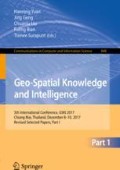Abstract
In order to solve the problem of frequent spectral state transition in the traditional cognitive radio network, the existing spectrum sensing is less reliable and the “hidden terminal” is added to reduce the interference to the main user. In this article raised introducing multiple secondary users to cognitive radio network and carrying out Hidden Markova Model (HMM) to main user’s spectrum. Recursion calculating forecast probability of user’s next time slot spectrum status is “busy” or “leisure.” All counting of the secondary users “busy” and “leisure” frequency. If the percentage is “busy” exceeds a certain value, so could judge following time slot spectrum status is “busy,” otherwise it is “leisure.” The simulation results show that the algorithm is 10%–20% higher than the average energy sensing algorithm, and it is more obvious at low level. This paper improves the perceived reliability while rapidly detecting the spectrum, and greatly reduces the interference to the primary user.
Access this chapter
Tax calculation will be finalised at checkout
Purchases are for personal use only
References
Federal Communication Commission: Spectrum Policy Task Force Report. ET Docket no. 02-155.FCC (2002)
Mitola, J., Maguire, G.Q.: Cognitive radio: making software radios more personal. IEEE Pers. Commun. 6(4), 13–18 (1999)
Khan, F., Nakagawa, K.: Comparative study of spectrum sensing techniques in cognitive radio networks. In: 2013 World Congress on Computer and Information Technology (WCCIT), pp. 1–8 (2013)
Wang, X., Wang, F., et al.: Spatial Sensing of PCA and RVM for stationary stability. Telecommun. Technol. 54(7), 893–898 (2014)
Liu, C.: A connected-components-based multi-scale wavelet approach for wideband spectrum sensing. In: International Informatization and Engineering Associations, Atlantis Press, Proceedings of 2015 3rd International Conference on Machinery, Materials and Information Technology Applications International Informatization and Engineering Associations, Atlantis Press, p. 6 (2015)
Yan, H.: Study on Spectrum Sensing Problem in Cognitive Radio System. Journal of Jilin University (2013)
Zhao, X.: A multi-threshold spectrum sensing algorithm based on the phototropism theory for cognitive radio. In: Proceedings of 2014 4th IEEE International Conference on Information Science and Technology. IEEE Beijing Section, p. 4 (2014)
Shu, D.M.: A cooperative spectrum sensing based on the decision fusion for cognitive radio networks. In: Proceedings of 2014 International Conference on Communication Technology and Application (CTA2014), p. 9. Advanced Science and Industry Research Center (2014)
Digham, F.F., Alouini, M.S., Simon, M.K.: On the energy detection of unknown signals over fading channels. IEEE Trans. Commun. 5(1), 21–24 (2007)
Sun, M.-W., Zhao, L., Xu, Q.-C.: Spatial sensing algorithm under dynamic time-varying fading channel. J. Commun. 35(7), 63–69 (2014)
Fanous, A., Sagduyu, Y.E., Ephremides, A.: Reliable spectrum sensing and opportunistic access in network-coded communications. IEEE J. Sel. Areas Commun. 32(3), 400–410 (2014)
Chaudhary, A., Dongre, M., Patil, H.: Energy-decisive and upgrade cooperative spectrum sensing in cognitive radio networks. Procedia Comput. Sci. 79, 683–691 (2016)
Dong, S., Zhang, J.: Based on energy efficiency collaborative spectrum sensing time optimization. Comput. Technol. Dev. 27(3), 176–180 (2017)
Choo, K.H., Tong, J.C.: Recent applications of Hidden Markov Models in computational biology. Genomics Proteomics Bioinform. 2(2), 84–96 (2004)
Acknowledgments
This research was supported in part by the National Natural Science Foundation of China (No. 61761007); in part by Guangxi Natural Science Foundation (No. 2016GXNSFAA380222)
Author information
Authors and Affiliations
Corresponding author
Editor information
Editors and Affiliations
Rights and permissions
Copyright information
© 2018 Springer Nature Singapore Pte Ltd.
About this paper
Cite this paper
Yang, W., Chen, W., Mekonen, M., Qin, T. (2018). Multi-users Cooperation in Spectrum Sensing Based on HMM Model for Cognitive Radios. In: Yuan, H., Geng, J., Liu, C., Bian, F., Surapunt, T. (eds) Geo-Spatial Knowledge and Intelligence. GSKI 2017. Communications in Computer and Information Science, vol 848. Springer, Singapore. https://doi.org/10.1007/978-981-13-0893-2_12
Download citation
DOI: https://doi.org/10.1007/978-981-13-0893-2_12
Published:
Publisher Name: Springer, Singapore
Print ISBN: 978-981-13-0892-5
Online ISBN: 978-981-13-0893-2
eBook Packages: Computer ScienceComputer Science (R0)

